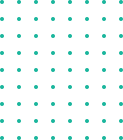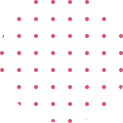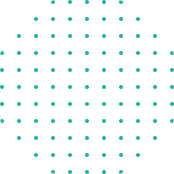Bio-medical Projects-Bio-medical engineering projects for Final year
2023 IEEE Biomedical project list on embedded based for M.Tech / MS / BE / B.Tech / Diploma / M.Sc students in Bangalore
Project ideas for Biomedical Engineering?
Biomedical engineers differ from other engineering branches where they design and apply skill and knowledge of modern biological principles in their engineering design process to help human health. Combination of mechanical engineering, electrical engineering, chemical engineering, materials science, chemistry, mathematics, and computer science and engineering are all integrated with human biology in biomedical engineering to improve human health,.
Biomedical engineering helps to improve human health and health care at all levels. There are opportunities for innovation, designing and developing new technologies. Today we have wide scope in the areas like passive medical devices, orthopedic implants, medical imaging, biomedical signal processing, tissue and stem cell engineering, and clinical engineering.
Biomedical engineering is an extremely broad field with many opportunities for specialization.
Final Year Project Ideas and list of Biomedical Engineering projects.
-
Low cost Oxygen Concentrator Design
-
Low cost Ventilator Using Arduino
-
IOT Covid Patient Healthcare System
-
Automated Diagnosis of COVID-19 using Deep Supervised Autoencoder with Multi-view Features from CT Images.
-
Recognition of the standardization of wearing masks during the epidemic of COVID-19
-
Harnessing the Power of Smart and Connected Health to Tackle COVID-19: IoT, AI, Robotics, and Blockchain for a Better World
-
Deep Learning Framework for Face Mask Detection
-
Low Cost Smart band to Prevent COVID-19
-
IoT Based UV Disinfection Machine
-
Service Robots in Hospitals To Reduce Spreading of COVID-19
-
IOT Wheelchair Fall Detector & Alert
-
IOT Temperature Mask Scan Entry System
-
Heart Rate Variability-Based Driver Drowsiness Detection and Its Validation With EEG.
IEEE projects for Biomedical Engineering
1.Microcontroller based anesthesia machine
In the hospitals when any major operation is performed, the patient must be in anesthetize condition. If the operation lasts for a long time, say for suppose for 5 or 7 hours, complete dose of anesthesia cannot be administered in a single stroke. It may lead to the patient’s death. If lower amount of anesthesia is administered, the patient may get up in midst to avoid this, the anesthetist administers few milliliters of anesthesia per hour to the patient.
If the anesthetist fails to administer the anesthesia to the patient at the particular time interval, other Allied problems may arise.To overcome such hazardous problems the design of an automatic operation of an anesthesia machine based on a micro-controller is effective. In this system provided syringe infusion pump along with the microcontroller . The anesthetist can set the level of anesthesia in terms of milliliters per hour to administer anesthesia to the patient.
After receiving the signal from the temperature sensor heart beat sensor and respiration sensor , the microcontroller controls the signal to the desire level and fed into the stepper motor to drive the infusion pump in proper manner. The anesthesia is administered to the patient according to the stepper motor rotation.This particular paper will be very much useful to physicians to see the current position of anesthesia of the patients. If the level of anesthesia is decreased to lower level (set value), the alarm will be initiated to alert the physician to refill the anesthesia in the Syringe Pump to continue the process
2.A Bendable and Wearable Cardio respiratory Monitoring Device Fusing Two Noncontact Sensor Principles (IEEE 2015).
This paper presents a mobile device for monitoring respiration and pulse. The device is realized as a bendable inlay, which can be put into a shirt pocket or the inside pocket of a jacket. In order to achieve optimum monitoring performance, the device combines two sensor principles both working in a noncontact way through several layers of cotton or other textiles.
One sensor is based on magnetic induction and is intended for respiratory monitoring, the other one is a reflective photoplethysmography sensor intended for pulse detection. Furthermore, since each sensor signal shows a certain dependence on both physiological parameters, fusing the sensor signals renders the possibility of signal coverage enhancement.
3.The patient-centric mobile healthcare system enhancing sensor connectivity and data interoperability (IEEE 2015).
The revolutionary improvements in low power devices and lightweight network protocols are making the mobile healthcare engage attentions. However there are some obstacles to realize mobile healthcare. Connectivity of miniaturized wearable sensors of the body area network (BAN) to the Internet is one of the most important issues in realizing mobile healthcare system. Interoperability is also important in order for sensor data not to be isolated in a local system.
In this paper, we designed our mobile healthcare system resolving connectivity and interoperability issues. In our mobile healthcare system, body sensors are integrated by leveraging RESTful web service via CoAP over IPv6, enabling web-based access from browsers. Extended EPCglobal architecture was used for our system to enable sharing of sensor data among applications with different domain through the standardized protocol. We developed two applications, patient browser and EagleEye, to prove its feasibility.
4.An Energy-Efficient Adaptive Sensing Framework for Gait Monitoring Using Smart Insole.
Gait analysis is an important process to gauge human motion. Recently, longitudinal gait analysis received much attention from the medical and healthcare domains. The challenge in studies over extended time periods is the battery life. Due to the continuous sensing and computing, wearable gait devices cannot fulfill a full-day work schedule. In this paper, we present an energy-efficient adaptive sensing framework to address this problem.
Through presampling for content understanding, a selective sensing and sparsity-based signal reconstruction method is proposed. In particular, we develop and implement the new sensing scheme in a smart insole system to reduce the number of samples, while still preserving the information integrity of gait parameters. Experimental results show the effectiveness of our method in data point reduction. Our proposed method improves the battery life to 10.47 h, while normalized mean square error is within 10%.
5.Controlling applications with hand gestures using sixth sense prototype / wear your world using sixth sense technology
SixthSense is a wearable, gestural interface that augments our physical world with digital information, and lets us use natural hand gestures to interact with that information. SixthSense brings intangible, digital information into the tangible world, and allows us to interact with this information via natural hand gestures. SixthSense frees information from its confines, seamlessly integrating it with reality, thus making the entire world your computer. The Sixth Sense prototype comprises a pocket projector, mirror, and camera worn in a pendant-like mobile device.
Both the projector and the camera are connected to a mobile computing device in the user’s pocket. The system projects information onto the surfaces and physical objects around us, making any surface into a digital interface; the camera recognizes and tracks both the user's hand gestures and physical objects using computer-vision-based techniques. SixthSense uses simple computer-vision techniques to process the video-stream data captured by the camera and follows the locations of colored markers on the user’s fingertips (which are used for visual tracking).
In addition, the software interprets the data into gestures to use for interacting with the projected application interfaces. The current SixthSense prototype supports several types of gesture-based interactions, demonstrating the usefulness, viability, and flexibility of the system. The current prototype system costs approximately $350 to build.
6.Eye ball Sensor for automatic Wheel Chair for paralyzed patients
This intelligent chair is designed to help the paralysed person who moves on a wheel chair, instead of the handicapped person moves the wheel chair by his hand, the chair will automatically move to a particular direction as the patient moves his eyes towards a direction, with the help of Eye ball movement detection sensor. The chair will also sense the obstacles in front of it and gives a beep sound.
7.A sleep apnea keeper in a wearable device for Continuous detection and screening during daily life
We intend to design a fully functional breathing monitor for the purpose of detecting events caused by sleep apnea. Sleep apnea is a sleeping disorder characterized by brief interruptions of breathing patterns. This interruption can last a couple seconds, or can be fatal where the patient never regains his or her breath. We are designing an apparatus that can detect the patients breathing rate, and notify a person monitoring the patient via RF to a handheld monitor.
An alarm is sounded at the handheld monitor if the patient’s breathing pattern changes, or halts. We are using pyroelectric sensors (infrared motion detectors) that measure the rate of change of temperature in a given area. The use of this type of sensor allows us to monitor breathing with absolutely nothing attached to the patient. As well, these sensors are much cheaper then typical breathing monitors available.
These features allow us to aim our product at the consumer market where it can be purchased cheaply, and is much less intrusive. Including additional ambient temperature sensors, and a microphone to detect noise,the system can send this information to a portable monitoring device to allow for a fully featured patient monitoring system.
8.Controlling applications with hand gestures using sixth sense prototype / wear your world using sixth sense technology
Sixth Sense is a wearable gestural interface that augments the physical world around us with digital information and lets us use natural hand gestures to interact with that information. The Sixth Sense prototype is comprised of a pocket projector, a mirror and a camera. It is the one which obey hand gestures of yours and gives you what you want to see and know. Sixth Sense Technology is a mini-projector coupled with a camera and a cell-phone which acts as the computer and connected to the Cloud, all the information stored on the web.
The camera recognizes objects around a person instantly, with the micro-projector overlaying the information on any surface, including the object itself or hand. Also can access or manipulate the information using fingers .make a call by Extend hand on front of the projector and numbers will appear for to click .know the time by Draw a circle on wrist and a watch will appear, take a photo by Just make a square with fingers, highlighting what want to frame, and the system will make the photo—which can later organize with the others using own hands over the air. The device has a huge number of applications, it is portable and easily to carry as can wear it in neck.
The drawing application lets user draw on any surface by observing the movement of index finger. Mapping can also be done anywhere with the features of zooming in or zooming out. The camera also helps user to take pictures of the scene is viewing and later can arrange them on any surface. Some of the more practical uses are reading a newspaper, reading a newspaper and viewing videos instead of the photos in the paper or live sports updates while reading the newspaper. The device can also tell arrival, departure or delay time of air plane on tickets. For book lovers it is nothing less than a blessing. Open any book and find the Amazon ratings of the book.
9.Voice Actuated Speaker-Dependent Control System for Hospital Bed
The main aim of this project is to provide a view of the patient information for each occupied or unoccupied bed (room type, sex, location, etc.) and, with user definable color coding, displays the bed status. Additional bed information is available by simply clicking on the bed to open a window displaying patient name, doctor name, isolation, special instructions and more.
10.Portable ECG Monitoring Device with Bluetooth and Holter Capabilities for Telemedicine Applications
A prototype of a portable ECG-monitoring device has been developed for clinical and non-clinical environments as part of a telemedicine system to provide remote and continuous surveillance of patients. The device can acquire, store and/or transmit ECG signals to computer-based platforms or specially configured access points (AP) with Intranet/Internet capabilities in order to reach remote monitoring stations. Acquired data can be stored in a flash memory card in FAT16 format for later recovery, or transmitted via Bluetooth or USB to a local station or AP. This data acquisition module (DAM) operates in two modes: Holter and on-line transmission.
11.Designing of Tele Medicine application on ARMTDMI architecture
This project is based on LPC2129 Controller. In this Body Area Networks (WBANs) are considered to be a new method for short range wireless communication. A Body Area Network (BAN) is defined formally as a system of devices in close proximity to a person’s body that cooperate for the benefit of the user.
The requirement to support very low data rates for sensor and medical healthcare applications, while meeting cost and power consumption targets, is probably the most demanding. A standard for body area networks has yet to be developed. This paper discusses several uses of the BAN technology As IEEE mentioned, the most obvious application of a BAN is in the medical sector using ECG monitoring.
12.Eyeball Sensor for automatic Wheel Chair for paralyzed patients
This intelligent chair is designed to help the paralysed person who moves on a wheel chair, instead of the handicapped person moves the wheel chair by his hand, the chair will automatically move to a particular direction as the patient moves his eyes towards a direction, with the help of Eye ball movement detection sensor. The chair will also sense the obstacles in front of it and gives a beep sound.
13.Fully Secured & Automated Corporate Environment Using Biometric Device
Automation Systems (BAS) operate in almost every commercial enterprise across the world. The primary purpose of this type of system is to provide a comfortable working environment. Since the comfort range for most people will accommodate fluctuations in their surrounding there was little need for building automation systems to provide anything other than a basic level of control.
Therefore these control systems allowed a rather wide variance of environmental factors like temperature, pressure and relative humidity. However, in some manufacturing facilities the environmental fluctuations that were well tolerated by people were not well tolerated by the products being produced.
These fluctuations caused increases in scrap, rework and affected other aspects of production and product quality.Convenience is very important element in the Corporate Environment But it is more important that protect Corporate users from attackers. And biometric recognition gives safety and user convenience. In this paper, we describe a corporate security service model and propose a user authentication mechanism using biometric recognition.
14.An Adaptable and Extensible Mobile Sensing Framework for Patient Monitoring
Smartphone apps with self-monitoring and sensing capabilities can help in disease prevention; however, such context-aware applications are difficult to develop, due to the complexities of sensor data acquisition, context modeling, and data management. To ease the development of mHealth and Telemedicine apps, we developed the Mobile Sensing Framework (MSF), which dynamically installs device appropriate context sensing plug-ins that provide a wealth of information about users’ mental and physical states.
The MSF automatically collects information about incoming/outgoing/missed calls; apps usage; sound pressure levels; light sensor values; movement data (e.g., step count); location; heart rate; etc. The MSF also includes a searchable object-based persistence layer, which is capable of rapidly serializing and de-serializing detected context data.
Collected data are stored securely in the phone’s database, where they can be retrieved by applications for local analysis, remote monitoring, and alert generation. We developed a fully operational prototype of the MSF platform that was validated using several Android-based devices. This paper presents an overview of our approach along with a description of the experiments conducted using the MSF prototype.
15.Mobile Data Acquisition towards Contextual Risk Assessment for Better Disease Management in Diabetes
Diabetes is one of the serious chronic medical conditions for which the patient's personal involvement into an adequate management of the disease is essential. This paper presents a framework to complement existing approaches in diabetes care through information technology instruments. Existing tools have been targeted at controlling the blood glucose level and generating alerts against hypo/hyper-glycaemia events, individualizing risk prediction based on epidemiological knowledge, or improving patient's education and motivation.
We propose analyzing contextual data from patients, i.e. using data collected through mobile devices, on a daily basis, to uncover the implications of the life style and individual behavior towards the risk for diabetic complications. The paper presents the rationale and the framework for this approach, rather than results from an accomplished work.
16.BIO-monitoring System with Conductive Textile Electrodes Integrated into T-shirt
This paper describes bio-monitoring system comprised of progressive electronic bio-sensing units and electrodes based on flexible conductive materials. Bio-monitoring system is used for long-term acquisition of physiological parameters such as ECG signal and breathing of monitored person during daily activities. In the article, the electronic and mechanical design of the system is described.
The system comprises 17 electrodes, which are made of intelligent conductive fabrics and are inwrought into a shirt. Signal acquisition is ensured by smart electronic unit, which also stores measured data in the memory and/or transfers it for further analysis to PC or Smartphone/tablet. This system is intended for a sports diagnostics and telemedicine monitoring of patients in home care or after medical procedure in hospital care.
17.Child Activity Recognition Based on Cooperative Fusion Model of a Triaxial Accelerometer and a Barometric Pressure Sensor
This paper presents a child activity recognition approach using a single 3-axis accelerometer and a barometric pressure sensor worn on a waist of the body to prevent child accidents such as unintentional injuries at home. Labeled accelerometer data are collected from children of both sexes up to the age of 16 to 29 months. To recognize daily activities, mean, standard deviation, and slope of time-domain features are calculated over sliding windows.
In addition, the FFT analysis is adopted to extract frequency-domain features of the aggregated data, and then energy and correlation of acceleration data are calculated. Child activities are classified into 11 daily activities which are wiggling, rolling, standing still, standing up, sitting down, walking, toddling, crawling, climbing up, climbing down, and stopping. The overall accuracy of activity recognition was 98.43% using only a single wearable triaxial accelerometer sensor and a barometric pressure sensor with a support vector machine.
18.Using of Raspberry Pi for Data Acquisition from Biochemical Analyzers
A large number of analyses performed in a biochemical laboratory requires that results of these analyses are automatically acquired from analyzers which can be of different types and produced by various producers. Automatic data acquisition prevents errors which are possible if results are manually transcribed into reports for patients. Beside this, acquired results are saved in database from where they are available to be used in electronic health record (EHR). Above requirement resulted in development of a solution for data acquisition from.
19.Design and Implementation / Real Time Embedded Tele-Health Monitoring System
Now a day's healthcare industry is to provide better healthcare to people anytime and anywhere in the world in a more economic and patient friendly manner. In the present paper the physiological parameters such as ECG, Pulse rate and Temperature are obtained, processed using ARM7 LPC 2138 processor and displayed in a MATLAB graphical user interface. Ir any vital parameter go es out of normal range then alert SMS will be sent to Doctor Mobile. This system is utilizing TeamViewer software and low cost component to transmit ECG data to physicians for monitoring, diagnosis and patients care at a significantly low cost, regardless of patient's location
20.A sleep apnea keeper in a wearable device for Continuous detection and screening during daily life Microcontroller based anesthesia machine
We intend to design a fully functional breathing monitor for the purpose of detecting events caused by sleep apnea. Sleep apnea is a sleeping disorder characterized by brief interruptions of breathing patterns. This interruption can last a couple seconds, or can be fatal where the patient never regains his or her breath. We are designing an apparatus that can detect the patients breathing rate, and notify a person monitoring the patient via RF to a handheld monitor. An alarm is sounded at the handheld monitor if the patient’s breathing pattern changes, or halts.
We are using pyroelectric sensors (infrared motion detectors) that measure the rate of change of temperature in a given area. The use of this type of sensor allows us to monitor breathing with absolutely nothing attached to the patient. As well, these sensors are much cheaper then typical breathing monitors available. These features allow us to aim our product at the consumer market where it can be purchased cheaply, and is much less intrusive. Including additional ambient temperature sensors, and a microphone to detect noise, the system can send this information to a portable monitoring device to allow for a fully featured patient monitoring system.












